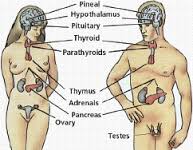A possible link between widely used pesticides in Australian food with Parkinson’s Disease uncovered by university studies.
Parkinson’s disease is the second-most prevalent neurodegenerative condition in Australia, with an estimated 70,000 Australians living with the disease1

Recently, ABC News reported on research showing a cluster of Parkinson’s disease cases in rural Victoria that may be linked to the use of pesticides. Although pesticides may not be the sole cause, researchers have recommended further studies to look at the link between farming practices and Parkinson’s disease. The crops farmed in these rural areas were chickpeas, broad beans, lentils and vetches (winter-growing legumes used for animal feed).2
An earlier report by ABC Rural stated that research is being conducted to test the effects of organophosphate pesticides on the nervous system of farmers. This 12-month study willb e the first step in determining whether the accumulation of organophosphates in the body is linked with aggressive cancers, neurological and/or psychotic conditions.3
Many Australian farmers may still use pesticides in sheep, beef, grain and dairy industries, even if they are banned, for economic reasons. Interestingly, organophosphates have been banned or restricted in the U.S., U.K. and Europe.3
The risk of pesticide exposure affects many populations.
Studies looking at many different populations have found that exposure to pesticides, organic solvents, heavy metals and air pollutants have been associated with an increased risk of Parkinson’s disease.4 [And most likely many other modern day health problems]
One study showed that patients exposed to pesticides had a 70% higher incidence of Parkinson’s.
The risk was the same for farmers and non-farmers, as these chemicals enter our food chain by remaining in the soil and water for decades.
Conception and fertility affected by chemicals
While these studies were focussed on Parkinson’s disease, others have found links to impaired fertility. The capacity of men and women for reproduction irrespective of pregnancy intentions may be on the decline with increasing exposure to persistent environmental chemicals.5
There has been limited human research in this area but a recent study looked at a large number of couples over 12 months and tracked time-to-pregnancy (TTP), miscarriages, infertility and birth size. The aim was to find out if toxins affected these factors.
They found that the men who were exposed to lead (found in drinking water, toys, paint and cosmetics), benzophenones (found in skin and hair care products and sunscreens), some phthalates (found in plastics, solvents and artificial fragrances) and PCBs (found in food, especially the fatty parts of meat) had poorer sperm quality and a significantly lowered fecundity of 30%. Therefore, it took longer for them to conceive. The PCBs actually affected the reproductive systems of both the men and women.6,7

These findings stress the importance of reducing toxin exposure and implementing detoxification programs, in both sexes prior to conception, not just the mother-to-be.
Any detoxification should be undertaken under the supervision of a qualified natural medicine practitioner.
To have your toxicity levels assessed and addressed, call True Medicine on 07 5530 1863.
Sources:
- Ayton Dr D, Warren Dr N, Ayton Dr S. What we know and suspect about the causes of Parkinson’s disease: Monash University; 2016. Viewed July 2016. http://monash.edu/news/show/what-we-know-and-suspect-about-the-causes-of-parkinsons-disease.
- Australian Broadcasting Corporation, Parkinson’s ‘cluster’ in Victoria could be linked to pesticides: ABC; 2016 http://www.abc.net.au/news/2016-04-11/researchers-find-parkinsons-cluster-in-rural-victoria/7315066
- Grindlay D. Research to examine links between pesticides and Parkinson’s: Australian Broadcasting Corporation http://www.abc.net.au/2016-02-17/chemicals-pesticides-organophosphates-research-farmer-health/7175340
- Polito L, Greco A, Seripa D. Genetic profile, environmental exposure and their interaction in Parkinson’s disease. Parkinsons Dis. 2016. Doi 10.1155/2016/6465793
- Buck Louis GM. Persistent environmental pollutants and couple fecundity: An overview. Reproduction (Cambridge, England) 2014;147(4)R97-R104.
- Buck Louis GM, Barr DB, Kannan K, et al. Paternal exposures to environmental chemicals and time to pregnancy: Overview of results from the life study. Andrology, 2016. doi 10.1111/andr.12171
- Boyle Megan. Male exposure to Chemicals linked to longer time to conceive. 2016 Viewed July 2016. http://www.ewg.org/enviroblog/201606/male-exposure-chemicals-linked-longer-time-conceive
